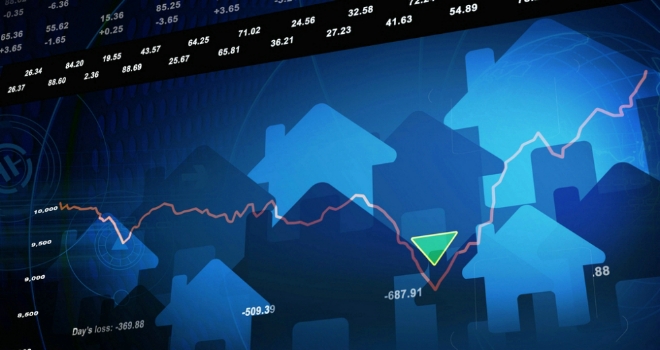
According to the report, the number of UK home sales continued to grow in the three months to April, rising by 8.3% compared to the preceding three months. House prices saw a monthly price rise of 0.6% and an annual price increase of 8.2%.
In England, the data shows an annual price increase of 9.1%, taking the average property value to £224,731.
Wales shows an annual price increase of 1.7% which takes the average property value to £139,385. However monthly house prices fell by 1.9%.
The North West saw the greatest monthly growth with an increase of 2.3%, but surprisingly the South West saw the most significant monthly price fall with a 2.8% fall.
London remains the region with the greatest increase in its average property value over the last 12 months with a movement of 14.5%.
Ian Thomas, Co-Founder and Director of LendInvest, commented: “Without fundamental changes to the way we build houses in Britain, further house price rises like the ones reported today are inevitable. All of the talk about the Brexit vote and the uncertainty it brings to the property market has merit. But whatever the result, the drastic undersupply of homes will mean that house prices continue to rise, and home ownership moves further and further away from aspiring home owners."
Andy Sommerville, Director of Search Acumen, comments: “The 8% leap in UK-wide prices from April 2015 to 2016 is much higher than the 5% year-on-year leap seen in April 2014-2015, which shows just how much house prices have shot up in the past year, despite the relatively moderate price rises we’ve seen in the last few months.
The EU Brexit debate has also zoomed in on house prices, and the potential costs of both remaining and leaving, which is putting people off buying and selling. Whatever the result may be next week, however, the housing market is fundamentally strong but the huge gap between demand for homes and the numbers being built will continue to see house prices rise.
Areas around the capital, in particular, are quite stretched with Slough, Waltham Forest, and Thurrock just behind London in the chasing pack of house prices. Aspiring first time buyers in these areas continue to be relatively worse off in terms of affordability.”
Stuart Law, CEO at Assetz for Investors, comments: "With the introduction of the 3% stamp duty hike brought into play at the beginning of April and the uncertainty around the EU referendum heating up, it’s not surprising that demand fell for the first time since March 2015. With the average property price in London now reaching £470,025, up by 14.5% year-on-year in April, it is also clear investors are becoming unsure whether they will continue to get enough bang for their buck, especially in the capital where the outcome of the referendum could have a significant impact on the housing market.
It’s clear, however, that the North continues to boast excellent value and potential for investors as prices remain low, with the average property price in Liverpool just £117,429. The North West did indeed experience the largest monthly change of 2.3%, which suggests investors are now moving away from the capital in search of the healthy yields and security the Northern property market is certain to provide them with.”
Andrew Bridges, managing director of Stirling Ackroyd comments: “London’s property crown is intact – for now. Unparalleled growth in house prices and unwavering demand mean a home in the capital now demands more than double the UK average. High prices aren’t putting off buyers, with the capital’s diverse variety of homes proving hard to resist. But this could be the calm before the storm.
A potential Brexit is producing jitters this June – and the London property market is the most vulnerable to this new anxiety. The top-end of the capital’s housing market has been stuck in a slowdown for a while now, with a 2.4% annualised fall in the last quarter of 2015. And this is worsening as buyers and sellers wait to see the referendum result – at least for the top end of London’s luxury market.
But this is a temporary drop – and London’s ability to bounce back is in no doubt. Buyers may be flirting with the idea of buying in the cheaper and newer areas around the capital. But London’s overall draw, for both domestic and international buyers, is undimmed. And the challenge of political developments will be unable to thwart the capital’s global property reign.”
Paul Smith, CEO of haart estate agents, comments: “Today’s data shows UK house prices in April continued to rise, up 0.7% on the month, but it appears the market is beginning to slow as both buyers and sellers get cold feet ahead of the EU referendum. Our most recent data shows that buyer demand fell 5.3% on the month in May while the number of new instructions declined 1.7% over the same time period as a result of the uncertainty in the wider economy. It’s no surprise that people are holding off on buying, particularly as the ‘Remain’ campaign are focusing so much on house prices and the economy. Whatever the result, house prices will bounce back from the current uncertainty as the age-old problem of a disparity between supply and demand will once again come to the fore.”





